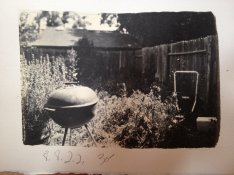alfsorenson
Member
- Joined
- May 7, 2015
- Messages
- 7
- Format
- 4x5 Format
Ok, I'm just starting off first time with darkroom and traditional development, so please be gentle. I've read enough that I know the basics of basics, but I am becoming a bit frustrated with some issues I'm having and hope someone can help here. I am on a very limited budget that is nearly already exceeded, and I haven't even started yet!
I recently acquired some Fuji HR-T 8x10 size x-ray film. I want to cut this film down into 4x5 sections, so it fits the maximum size the Yankee tank will allow. I'm running into several issues:
1) The x-ray film box specifies a "Fuji Safelight Glass No. 8U", yet I can't seem to find this anywhere on the web at reasonable cost. I see safelight lamps for x-ray film running $100 or more, but is there a much cheaper alternative that actually works and won't fog the film?
2) How do I go about opening the x-ray film box in total darkness? Are films like this a box within a box? Is it resealable once I remove some film sheets? Due to the uncertainty of safelight, I don't want to try opening the entire 100 sheets in that light.
3) How do I cut and handle the film? I was just going to use scissors and a 4x5 cardboard template to feel the film into position and cut in the dark. Are cotton gloves ok to use for handling?
4) The instructions for the Yankee say that for 4x5 film, 55 ounces of solution are required. On advice of a friend, I was going to use Kodak D-76 developer (which makes 0.26 gal once mixed), Kodak fixer (1 gal) and Kodak stop bath (16 oz). Unless I'm overlooking something, it appears that I already don't have enough chemicals if 55 oz are needed each time. Am I supposed to use the chemicals full strength or can they be diluted? Also, can I pour any from the tank back into the chemical bottle they came from (in other words, which ones are reuseable and for how long)?
I realize some of this may fall into other categories and I apologize if so. Appreciate any advice/ experience anyone may have.
Thanks,
Alf
I recently acquired some Fuji HR-T 8x10 size x-ray film. I want to cut this film down into 4x5 sections, so it fits the maximum size the Yankee tank will allow. I'm running into several issues:
1) The x-ray film box specifies a "Fuji Safelight Glass No. 8U", yet I can't seem to find this anywhere on the web at reasonable cost. I see safelight lamps for x-ray film running $100 or more, but is there a much cheaper alternative that actually works and won't fog the film?
2) How do I go about opening the x-ray film box in total darkness? Are films like this a box within a box? Is it resealable once I remove some film sheets? Due to the uncertainty of safelight, I don't want to try opening the entire 100 sheets in that light.
3) How do I cut and handle the film? I was just going to use scissors and a 4x5 cardboard template to feel the film into position and cut in the dark. Are cotton gloves ok to use for handling?
4) The instructions for the Yankee say that for 4x5 film, 55 ounces of solution are required. On advice of a friend, I was going to use Kodak D-76 developer (which makes 0.26 gal once mixed), Kodak fixer (1 gal) and Kodak stop bath (16 oz). Unless I'm overlooking something, it appears that I already don't have enough chemicals if 55 oz are needed each time. Am I supposed to use the chemicals full strength or can they be diluted? Also, can I pour any from the tank back into the chemical bottle they came from (in other words, which ones are reuseable and for how long)?
I realize some of this may fall into other categories and I apologize if so. Appreciate any advice/ experience anyone may have.
Thanks,
Alf











 .
.